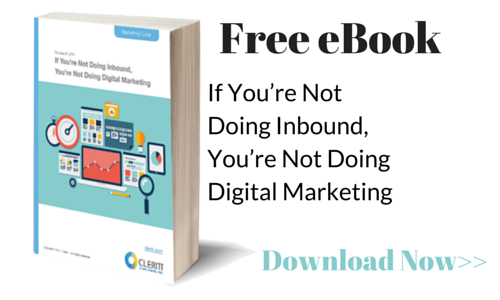- Jan 2, 2015
- By Aly Schweigert
- In Marketing Strategy and Planning, Content Marketing
Top Four Signs Your Blog is Embarrassingly Out-of-Date


Remember a simpler time in the 1990s, when everybody online had their own Geocities or Angelfire page? Close your eyes and remember the walls of scrolling marquee text, the starfield wallpaper on every site that wanted to be taken seriously, the endless rotating GIFs.
We reasonably hope that, because you’re reading this, we wouldn’t find your company’s website on a Buzzfeed list of the “20 Most 90s Websites that Exist Today.”
Perhaps, though, you’ve been developing blog post ideas and creating content for months or years without taking the time to examine the usefulness of your blog itself. The pace of changing technology and design can make your blog noticeably out-of-date before you may realize it. Here are four things to look for to make sure you’re not directing inbound traffic to a dusty relic of a website:
1. Your content isn’t properly tagged, searchable, shareable, or SEO-optimized
The concept of “SEO-optimized” changes with every update to Google’s algorithm, but the importance of SEO doesn't change. There once was a time when the best way to rise to the top of Google’s results was to carpet bomb your content with relevant keywords, with little regard for coherence. While pagerank and SEO are still important, how to rank is changing: updating your blog begins first and foremost with rich, relevant content.
Your content is at the very heart of your inbound efforts—making sure it’s as useful as possible is imperative. Instead of keyword-stuffing—or using unrelated content—to get to the top of search results, focus on integrating what we’ve learned over the last several years about SEO and weaving it into blog posts that have inherent value and information.
2. Your stock photography runneth over
For companies of small to moderate size, stock photography is an easy fix to boost the page rank of your blog posts. Articles with images earn nearly double the views of those without, and visuals can make your website more attractive to searchers. But, at a certain point, using nothing but stock photography becomes pointless.
Using your own imagery—and filling in the gaps with stock photos—gives your blog a personal, relatable feel that your visitors will respond to. It’s an easy way to pull back the veil and elevate your blog from being hollow and too sales-oriented to inviting, asking visitors to come back to read and interact more.
3. You’re using Flash
This is the cardinal sin of website design these days—it prevents Apple iOS (and Android) users from effectively seeing your site. That means iPhone and iPad users won’t see the “best of the best” elements on your site—or won’t see anything at all depending on how much of your site is built with it. Video, animations, and interactive aspects of your site can all be done effectively using Flash alternatives HTML5, CSS, or Java. Even disregarding zero reach to Apple users, Flash presents potential accessibility problems between loading times and plugin restrictions.
Flash also really hinders your SEO efforts. Flash’s embedded content mostly can’t be crawled by search engines and kills searchability and your page rank.
4. Your site is a mess on mobile
Even if you’re not using Flash on your site, it doesn’t mean it’s going to look good on a mobile device. Marketers have been recognizing the ever-increasing share of mobile web browsing for the last few years. 2014 marked the first occasion in history that users interacted with sites on mobile more than on desktop.
Mobile functionality is imperative for your website to reach the most eyeballs, especially eyeballs that are attached to people looking for relevant content online. More mobile browsing means a good percentage of your inbound marketing prospects are interacting with your content and responding via mobile. If your blog posts aren’t easy to navigate on mobile, you’re wasting your inbound efforts.
The solution? Make your blog a priority
It’s easy to understand why your blog might be out of date; perhaps, up to this point, you haven’t made digital ROI a priority, or you don't see the benefits of customer relationship in a blog. Many companies—and particularly companies in B2B industries like healthcare, manufacturing, or finance—may not have “made the leap” toward inbound marketing, feeling that a working website is enough. But more and more, your customers and prospects are going online to answer their questions, seek information, and research possible alternatives — and you want to be ready when they show up on your website. Updating your blogs is one way to get ahead of the curve.
For more information on how to stay current, check out our complimentary guide, “If You're Not Doing Inbound, You're Not Doing Digital Marketing.” We outline the benefits of inbound marketing and help you understand how to get started.





